Feel free to share all entertainment updates across the world
Entertainment shorts and long videos are welcome
You can paste the link of any video and invite your friend to join you to watch it as discussion goes on
You can invite friends and make a chat section as you enjoyed your activities on Leo, different entertainment activities are welcome
Don't forget to subscribe to @mightpossibly, so you can be able to use the #aisummaries tool to feed in YouTube entertainment video on this cast.
Since today is the pagan holiday Yule, this YouTube™️ video is entertaining as well as educational I believe. Then again I love history and the study of cultures.
The transcript discusses the best games of 2024, with a surprise winner: Metaphor Refantasio. The year saw a wide range of games, from Dragon Age: The Veil Guard to Black Myth: Wukong, but Metaphor Refantasio took the top spot.
🏞️ Indiana Jones and the Great Circle: An adventure game that brings the iconic archaeologist to life, with a great story and fun gameplay.
🏃♀️ Echoes of Wisdom: A top-down adventure game that puts Zelda in charge of her own legend, with classic puzzles and dungeons.
👽 Hell Divers 2: A squad-based third-person shooter with a satirical take on the military-industrial complex and addictive gameplay.
🌌 Final Fantasy 7 Rebirth: An open-world RPG that encompasses important moments from the original, with a brilliant story and love for the characters.
🤖 Astrobot: A 3D platformer that showcases the PS5's powerful GPU and fast SSD, with a delightful and wonderous experience.
The Winner
🏆 Metaphor Refantasio: A stylish turn-based RPG that tackles philosophical questions and has a grand cross-continental adventure, making it the IGN pick for best game of 2024.
1/3🧵 #threadstorm
We are in the last Splinterlands season of the year. The season will end with the end of year. I am paying in the Diamond II league now and claimed the Diamond III league rewards just now. Till now earned the 30,294 Glints and every winning battle reward with approximately 400 Glints. We have passed the one third of the season so in this way hopefully will earned more then 150K Glints by the end of the season. I am thinking of reinvestment the token earned form the game back into the game assets. I am holding good amount of SPS so will spend some SPS to purchase some NFT cards form the Soulkeep game.
Above is the screenshot from the coingecko which shows the SPS price change in the last 3 months. The SPS price was slightly more then 0.01 USD one month ago which is in the mid of the November. I was expecting the price rise again as the Bitcoin is performed well in the December and touched the ATH. As I mentioned I am thinking of reinvesting SPS so will wait for the price to give upward move signal then only will make the purchase with the SPS tokens.
Genuinely, I believe more needs to be done to get Hive noticed. It is a sleeping giant but the crypto space is filled with investors looking for quick cash. If Hive were to be a centralized project, it would probably be doing far better than it is currently but it would be to the pocket of the top investors.
Am I the only one having major issues trying to go from "Home" to "Notifications" Some times it is normal, over 50 percent of the time it lags. Bar goes across the top of screen like it is loading. I have to switch back and forth many times just to get Notifications to come up. #feedback
The difficulty in circular economy is exactly why we need to attempt at it. I don't expect everyone to start using HBD as much as credit cards. If there is at least one shop a HIVE user could use their HBD once a month, it is a big win.
I couldn’t get anyone to watch Home Alone with me this year, so I’m watching it on my own. It’s funny and over the top, but also really touching. It’s such a well done movie, perfect from beginning to end
The total crypto market cap has climbed back above $3.550 trillion again. Looks like things are picking up in the crypto world towards the ending of the year.
“Nothing in this world can take the place of persistence. Talent will not; nothing is more common than unsuccessful men with talent. Genius will not; unrewarded genius is almost a proverb. Education will not; the world is full of educated derelicts. Persistence and determination alone are omnipotent. The slogan 'Press On!' has solved and always will solve the problems of the human race.”
― Calvin Coolidge
An external motivation can never Inspire you. It will only Motivate you to move, but you will soon stop. Seek Inspiration and discipline over motivation
#feedback … iOS & iPadOS / Safari / LeoAuth
🙄 This is still not working! 🙄 Ongoing for month now! 🙄
https://inleo.io/threads/view/moretea/re-leothreads-2yhra3j1v
Leo Entertainment Threadcast.
Don't forget to subscribe to @mightpossibly, so you can be able to use the #aisummaries tool to feed in YouTube entertainment video on this cast.
#threadcast #leoentertainment #mcb 21/12/2024
Since today is the pagan holiday Yule, this YouTube™️ video is entertaining as well as educational I believe. Then again I love history and the study of cultures.
#holidays #pagan
This is very cool, that's for joining the entertainers 🤗🤗🤗2..
Thanks for feeding us with some entertainment stuffs, feel free to keep sharing all entertaining updates on this threadcast 🥰🥰🥰🥰...
!BBH !DOOK
@sgt-dan! @calebmarvel01 likes your content! so I just sent 1 BBH to your account on behalf of @calebmarvel01. (1/1)
(html comment removed: )
)
With everything going on in the world, I like my news to be entertaining. That being said, here is a news show that I like:
#leoentertainment #comedy #politics #dailydook
A Surprising Game of the Year Winner
The transcript discusses the best games of 2024, with a surprise winner: Metaphor Refantasio. The year saw a wide range of games, from Dragon Age: The Veil Guard to Black Myth: Wukong, but Metaphor Refantasio took the top spot.
Honorable Mentions
Runner-Ups
The Winner
!summarize
!summarize
That's... Interesting. I'm pretty sure this was the premise of a couple manga that we thought were ridicoulous !!
!summarize
!summarize #startrek #television #franchise #scifi
!summarize
!summarize
!summarize
!summarize
!summarize
!summarize
!summarize
!summarize
!summarize
!summarize
!summarize
!summarize
!summarize
!summarize
!summarize
!summarize
!summarize
!summarize
!summarize
!summarize
!summarize
!summarize
!summarize
!summarize
!summarize
!summarize
!summarize
!summarize
!summarize
!summarize
!summarize
!summarize
!summarize
!summarize
!summarize
!summarize
!summarize
!summarize
!summarize
!summarize
!summarize
!summarize
!summarize
!summarize
!summarize
!summarize
!summarize
!summarize
!summarize
!summarize
!summarize
!summarize
!summarize
!summarize
!summarize
!summarize
!summarize
!summarize
!summarize
!summarize
!summarize
!summarize
!summarize
!summarize
!summarize
!summarize
!summarize
!summarize
https://inleo.io/threads/view/mightpossibly/re-leothreads-h9bpsxwe?referral=mightpossibly
This is great 🤗🤗🤗, I need to be increase my input also...
🤗🤗🤗.
!summarize #anissajones #familyaffiar #hollywood #death
!summarize #oscars #hollywood #money #woke #broke
!summarize #robertdeniro #hollywood #studios #firing
!summarize #disney #abc #whoopi #stephanopoulos #news
!summarize #espn #patmacafee #stephenasmith #broadcast
!summarize
!summarize
!summarize
!summarize
!summarize
!summarize
!summarize
!summarize
!summarize
!summarize
!summarize
!summarize
!summarize
!summarize
!summarize
!summarize
!summarize
!summarize
!summarize
!summarize
!summarize
!summarize
!summarize
!summarize #chemistry #science #movies #television #hollywood
!summarize
!summarize
!summarize
!summarize
!summarize
!summarize
!summarize
!summarize
!summarize
!summarize
!summarize
!summarize
!summarize
!summarize
!summarize
!summarize
!summarize #disney #lionking #movies #sonic3
!summarize
!summarize
!summarize
!summarize
!summarize
!summarize
!summarize
!summarize
!summarize
!summarize
!summarize
!summarize
!summarize
!summarize
1/3🧵 #threadstorm

We are in the last Splinterlands season of the year. The season will end with the end of year. I am paying in the Diamond II league now and claimed the Diamond III league rewards just now. Till now earned the 30,294 Glints and every winning battle reward with approximately 400 Glints. We have passed the one third of the season so in this way hopefully will earned more then 150K Glints by the end of the season. I am thinking of reinvestment the token earned form the game back into the game assets. I am holding good amount of SPS so will spend some SPS to purchase some NFT cards form the Soulkeep game.
#outreach #splinterlands #ply2earn #web3
2/3🧵
Above is the screenshot from the coingecko which shows the SPS price change in the last 3 months. The SPS price was slightly more then 0.01 USD one month ago which is in the mid of the November. I was expecting the price rise again as the Bitcoin is performed well in the December and touched the ATH. As I mentioned I am thinking of reinvesting SPS so will wait for the price to give upward move signal then only will make the purchase with the SPS tokens.
3/3🧵
Check my latest post where I shared my views on same.
#gosh
https://inleo.io/@guurry123/last-splinterlands-season-of-the-year-diamond-ii-progress-rewards-and-investment-plans-kg4
I would have watched a Christmas movie but I'll shake things up this Christmas. My two favorite movies Rocky and Superman (the old ones)
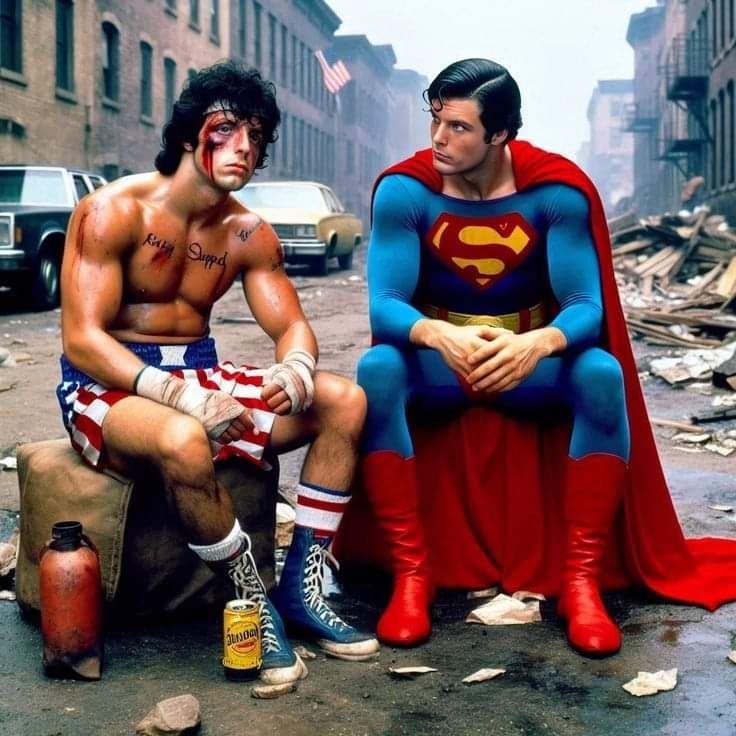
#dripday #bbh #bbho thanks @bradleyarrow
Awesome !BBH !DOOK
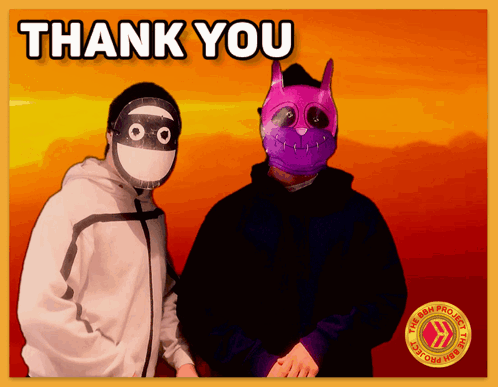
@rainbowdash4l! @bradleyarrow likes your content! so I just sent 1 BBH to your account on behalf of @bradleyarrow. (7/100)
(html comment removed: )
)
what's this front-end?
hive-engine explorer
https://he.dtools.dev/
There's always a way to resolve without violence

told myself last week, I'm cooking my own meals at home, no takeouts anymore.
Being best worker of the year in my company for 2 straight years if death comes for me I'll tell him, I have to check with work first
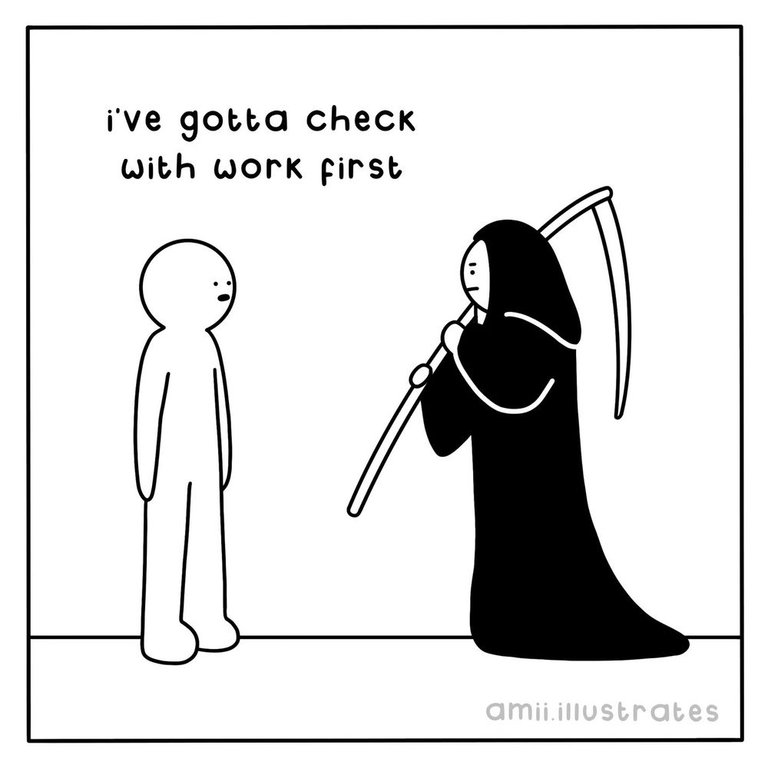
Good Morning :)
Good morning
Hello Friend 🤗🤗🤗🤗...
Morning morning to you ..
Drip Day is like Xmas where you get 5 little presents. @BradleyArrow

#bbh #dripday #xmas #dailydook
Noice drips man, gotta go check mine. !BBH !DOOK !INDEED
Yeah, thanks!
Awesome :) !BBH !DOOK

Thank you, my friend!
!BBH
@bradleyarrow! @chaosmagic23 likes your content! so I just sent 1 BBH to your account on behalf of @chaosmagic23. (3/50)
(html comment removed: )
)
@chaosmagic23! @bradleyarrow likes your content! so I just sent 1 BBH to your account on behalf of @bradleyarrow. (10/100)
(html comment removed: )
)
@chaosmagic23! @pepetoken likes your content! so I just sent 1 BBH to your account on behalf of @pepetoken. (7/100)
(html comment removed: )
)
Hive 25 million
Some users believe Hive is currently being mismanaged and will not come good without a major change.
What changes do you think need to be made?
Genuinely, I believe more needs to be done to get Hive noticed. It is a sleeping giant but the crypto space is filled with investors looking for quick cash. If Hive were to be a centralized project, it would probably be doing far better than it is currently but it would be to the pocket of the top investors.
Am I the only one having major issues trying to go from "Home" to "Notifications" Some times it is normal, over 50 percent of the time it lags. Bar goes across the top of screen like it is loading. I have to switch back and forth many times just to get Notifications to come up. #feedback
I had same issue a few hours ago, but it's working well from my end now...
Greetings Papa 😊😁😁
Morning Son :)
!BBH
Morning Papa 😊😊😊..
@calebmarvel01! @bradleyarrow likes your content! so I just sent 1 BBH to your account on behalf of @bradleyarrow. (4/100)
(html comment removed: )
)
Same here.
Now who would buy such a jacket for the little girl. If it being cheap was your excuse ain't that an irony 🤣🤣🤣🤣

1/🧵
Ever had a Zoom meeting ruined by bad internet? That was me, scrambling to reconnect during a crucial call.
#outreach #threadstorm
2/🧵

Despite running speed tests beforehand, multiple phone calls disrupted my connection. It was a nightmare, but I learned my lessons!
3/🧵
Now I have backup networks and a solid pre-call routine. Read my story and learn how to avoid meeting mishaps in my latest #inleo post. #gosh
https://inleo.io/@depressedfuckup/sour-zoom-call-and-food-gwb
Heading into get our running bibs 🏃🏽 🏃🏻♀️
#bbh #drips #thebbhproject #bbho
Thanks @bradleyarrow for the tokens. Keep it coming :-)
Awesome !BBH !DOOK

Happy #dripday!
!BBH
@imfarhad! @bradleyarrow likes your content! so I just sent 1 BBH to your account on behalf of @bradleyarrow. (5/100)
(html comment removed: )
)
@imfarhad! @logen9f likes your content! so I just sent 1 BBH to your account on behalf of @logen9f. (3/5)
(html comment removed: )
)
Got my drips! Thank you, @bradleyarrow
#bbh #cent #gifu
Awesome :) !BBH !DOOK

@logen9f! @bradleyarrow likes your content! so I just sent 1 BBH to your account on behalf of @bradleyarrow. (6/100)
(html comment removed: )
)
Welcome To Greener Candles #17 !
This crypto-focused #threadcast is packed with news, hot topics and alpha, inviting all crypto enthusiasts to engage.
Newbie friendly, ask questions, share your stuff!
Also serves as a newsletter (switch to 'oldest')
Vote, comment, get upvotes
Join the fun and let's get this up there! 🟢 Thumbnail art by @furuyagi0116 (X account)
#crypto
The AI Agent Narrative Still Strong
Sonic Mainnet Is Live!
#crypto #airdrops

Trending On CoinGecko
Stupid Clickbait Thumbnail Images & Titles
#crypto

KOL Mindshare
#crypto

De-throning Hyperliquid
Happened This Week
#crypto
Today's Bubbles 🟢
Looks a lot different than yesterday! 💹
#crypto

High Conviction....
Super Bullish On The Upcoming HyperEVM
Link to thread:
AI Agents
Net Flows of Different Chains
#crypto
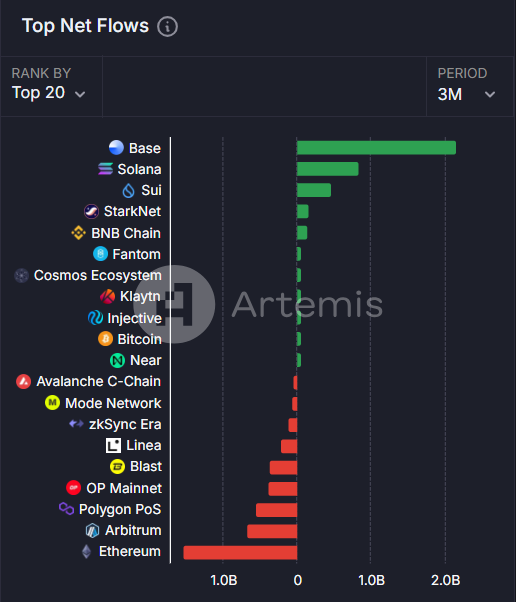
Closer Look At Some of The Ai Agents
#crypto
Writing a longer post about the Sonic launch and their airdrop. Stay tuned!
New Blog Post Out!
https://inleo.io/@brando28/sonic-is-live-prepare-to-farm-the-big-airdrop-5xk?referral=brando28
The difficulty in circular economy is exactly why we need to attempt at it. I don't expect everyone to start using HBD as much as credit cards. If there is at least one shop a HIVE user could use their HBD once a month, it is a big win.
I couldn’t get anyone to watch Home Alone with me this year, so I’m watching it on my own. It’s funny and over the top, but also really touching. It’s such a well done movie, perfect from beginning to end
Great film! 👍
Earlier This Year .! This was a Beautiful Experience .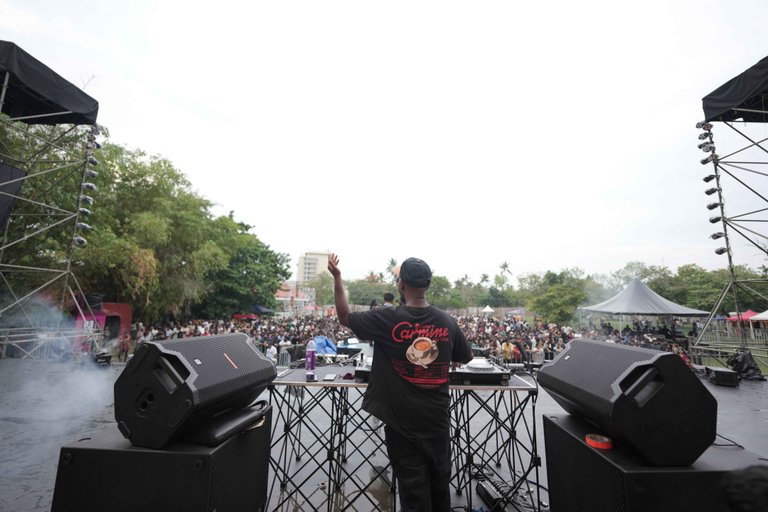
#music #live #Dj
So FARTCOIN will be listed on Binance soon. I'm happy to be alive in this era
The total crypto market cap has climbed back above $3.550 trillion again. Looks like things are picking up in the crypto world towards the ending of the year.
#MarketCap
Tether Takes $775M Stake in Video-Sharing Platform Rumble; RUM Shares Soar 41%
#coindesknew
If you are interested how I'm doing with my account. I just made a post about it!
#mloda
https://inleo.io/@anderssinho/my-hive-account-update-7-6k3
#meme #leo

Similar to what happened to me a couple hours ago, I called the delivery guy and they said it's a bonus. I was chosen 😎

1/🧵
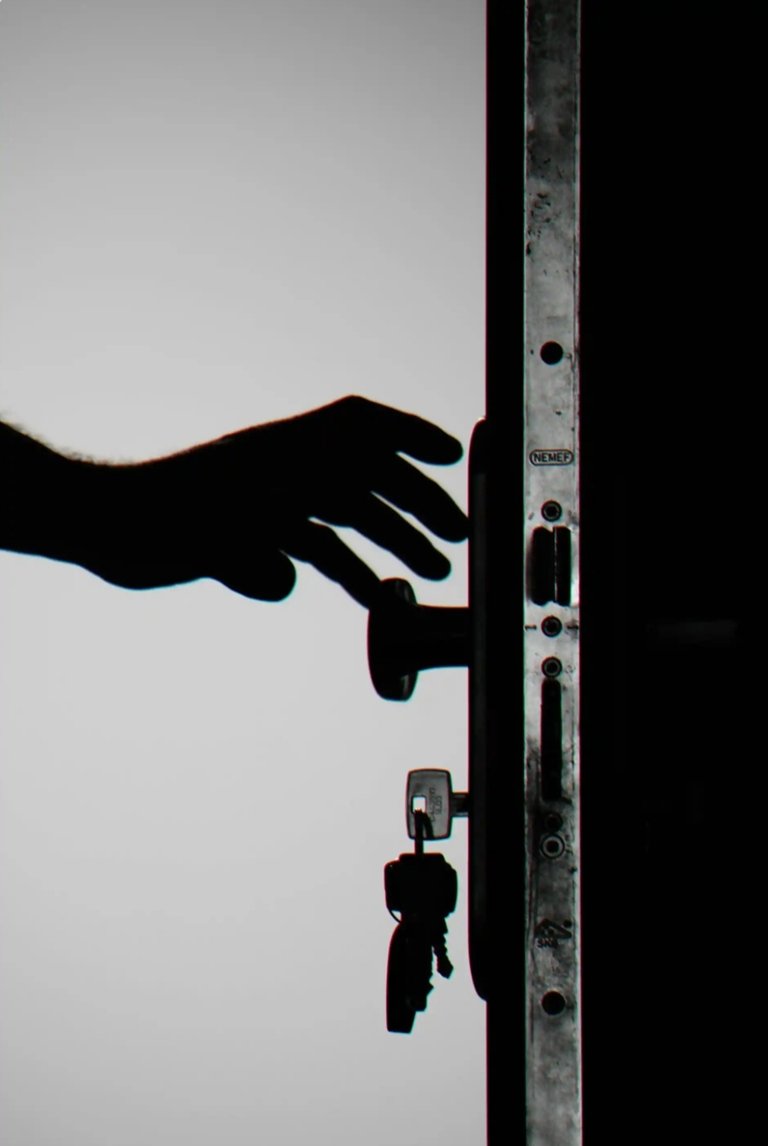
I share my various experience of fear and uncertainty, and how I come to realize that it is universal.
#threadstorm #outreach
2/🧵

I went ahead to discuss that it is a part of our everyday life and also important for out growth and the need to just face it head-on.
3/🧵
Like to read more about this educative piece kindly visit...#gosh
https://inleo.io/@marsdave/embracing-the-unknown-fear-and-uncertainty-a-stimulant-for-growth-enr
Yep. Everybody feels it. Some feel it worse than others.
Yes,that's true.
Thanks a lot for stopping by.
Success isn’t always about greatness. It’s about consistency. Consistent hard work gains success. Greatness will come. Keep it going friends
Reminds me of one of my favorite quotes:
“Nothing in this world can take the place of persistence. Talent will not; nothing is more common than unsuccessful men with talent. Genius will not; unrewarded genius is almost a proverb. Education will not; the world is full of educated derelicts. Persistence and determination alone are omnipotent. The slogan 'Press On!' has solved and always will solve the problems of the human race.”
― Calvin Coolidge
I absolutely love this quote man, it's so deep thank you for this 🙏 Merry Christmas to you bro
Liberty has been working all year round, she needs a break. And for me true liberty is crypto and Blockchain projects like InLeo

One day, I hope to be as good at anything as Prince was at playing that guitar.

An external motivation can never Inspire you. It will only Motivate you to move, but you will soon stop. Seek Inspiration and discipline over motivation
And that'll be me writing a letter to Arnold Schwarzenegger. The Body of the letter will be : I'll be back

LOL!!
I'm happy you got the joke 😆😆
If opportunity doesn't knock, build a Door, sometimes you just gotta DIY to create the opportunity
If you have a dog or pet named shark, don't send it to the beach and yell it's name, shit can get real

I just wrote a 1,300-word post...and I decided to divide it into 2.
I have two upcoming content now 😀
Guess what is it?
A post about how to maximize your post.
haha lol!
It's actually up now :)
It's getting colder and colder I guess I'll make this a rule, if temperature drops below my age I'm now going out hahahaha

That's actually a pretty good rule! I like it!
haha I knew someone would agree with me.. it's almost too cold for me to get outside I'm getting sick because of it, can't
Good morning inleos! 🦁
Today is a good day, lets get after it.
Good Morning indeed!
How many people heard of the Luigi thing. And to comment this meme, it depends on Which government which people in power
Survival of the fittest #darwin !LOLZ
#horrible
lolztoken.com
An abra-cadaver.
Credit: marshmellowman
@blockace, I sent you an $LOLZ on behalf of ben.haase
(3/10)
Farm LOLZ tokens when you Delegate Hive or Hive Tokens.
Click to delegate: 10 - 20 - 50 - 100 HP
💯 agreed
When you're too busy trying to achieve you have less time to be jealous or envious of others.
People who are jealous may struggle with self-worth and might lack a healthy sense of self-attachment.
But there is the other side where you love someone so much you develop some jealousy where it protects, should I call it a healthy one?
No context for this 🤣🤣 let's just say cats are gentleman's best friend
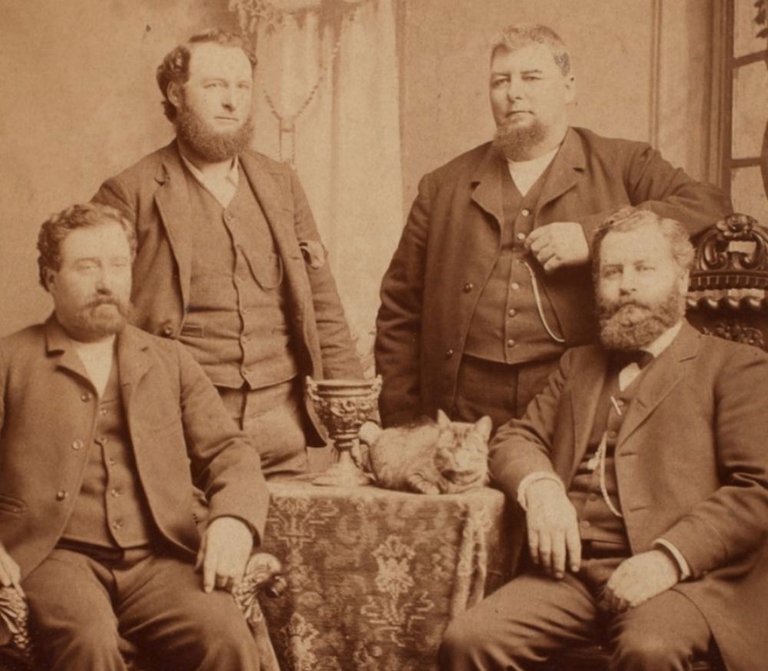
So our little human, 10 years old is really into geography and flags... secret Santa 🎅 have home a present he absolutely loves
Carry-On is a pretty good Christmas action movie in the mold of Die Hard. Watch on Netflix 😀
#cent #gifu #movieonleo
Understanding why your phone is displaying "no service* and how to fix
https://inleo.io/@etukakpan01/why-is-my-phone-not-reachable-or-not-having-signal-understanding-weak-mobile-signal-areas?referral=etukakpan01
https://inleo.io/@etukakpan01/why-is-my-phone-not-reachable-or-not-having-signal-understanding-weak-mobile-signal-areas?referral=etukakpan01
“You only live once, but if you do it right, once is enough.”
― Mae West